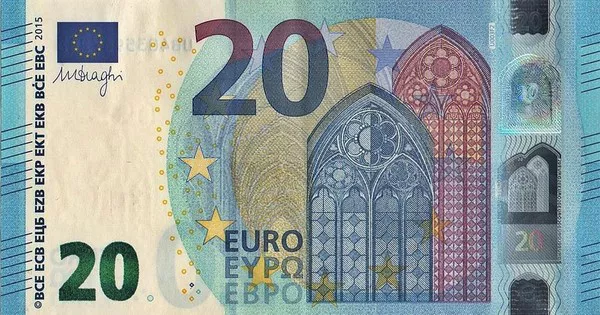In the complex and dynamic world of forex trading, understanding the functions and roles of central banks is crucial for investors and traders alike. Among these, the European Central Bank (ECB) holds a significant position, playing a pivotal role in shaping the economic landscape of the Eurozone. This article delves into the question: Is the ECB truly a central bank? By exploring its origins, functions, and impact on forex markets, we aim to shed light on the intricate relationship between the ECB and the forex trading arena.
Origins and Establishment of the European Central Bank
The European Central Bank, headquartered in Frankfurt, Germany, came into existence on June 1, 1998. Its establishment was a pivotal moment in the ongoing process of European economic integration. The Maastricht Treaty, signed in 1992, laid the foundation for the creation of the ECB and the euro currency.
The primary objective of the ECB is to maintain price stability within the Eurozone. Unlike national central banks, the ECB focuses on the collective well-being of the entire Eurozone, comprising 19 of the 27 European Union member states. This unique structure raises the question of whether the ECB can be considered a traditional central bank.
The ECB’s Mandate and Policy Tools
The ECB’s primary mandate is to ensure price stability, which it defines as maintaining an inflation rate close to, but below, 2% over the medium term. To achieve this, the ECB utilizes a range of monetary policy tools. These tools include setting interest rates, conducting open market operations, and employing unconventional measures such as quantitative easing.
Interest rate decisions by the ECB have a profound impact on forex markets. Traders closely monitor announcements from the ECB regarding changes in key interest rates, as these decisions influence the attractiveness of the euro as an investment currency. The delicate balance between inflation control and economic growth shapes the ECB’s policy decisions, making it a key player in the forex arena.
Forex Markets and the Euro: A Symbiotic Relationship
The euro (EUR) is one of the most traded currencies in the global forex market. The ECB’s policies and actions have a direct impact on the valuation of the euro, making it essential for forex traders to stay abreast of ECB developments.
When the ECB implements expansionary monetary policies, such as lowering interest rates or engaging in quantitative easing, the value of the euro may decline. Conversely, tightening measures, like raising interest rates, can boost the euro’s value. Forex traders strategically position themselves based on these policy expectations, capitalizing on potential currency movements.
Challenges to the ECB’s Central Bank Status
While the ECB undeniably possesses characteristics of a central bank, challenges to its conventional central bank status persist. Unlike traditional central banks, the ECB does not have a unified fiscal counterpart. Each Eurozone member state retains control over its fiscal policies, leading to a potential misalignment between monetary and fiscal objectives.
The absence of a centralized fiscal authority complicates the ECB’s ability to address economic disparities among member states. Critics argue that true central bank status necessitates a comprehensive mandate, including authority over fiscal policies. This debate underscores the ongoing evolution of the Eurozone’s economic governance framework.
Global Implications of ECB Actions
The interconnected nature of global financial markets means that decisions made by the ECB reverberate far beyond the Eurozone. The euro’s status as a major reserve currency and its widespread use in international trade contribute to the global impact of ECB policies.
Forex traders worldwide closely monitor ECB announcements, as shifts in the euro’s value can affect currency pairs involving other major currencies, including the US dollar (EUR/USD) and the Japanese yen (EUR/JPY). Understanding the ECB’s role as a central bank is, therefore, imperative for anyone participating in the global forex market.
The ECB’s Response to Economic Crises
The global financial crisis of 2008 and the subsequent Eurozone debt crisis tested the resilience of the ECB. In these challenging times, the ECB demonstrated its commitment to safeguarding the stability of the Eurozone. Unconventional monetary policies, such as the Outright Monetary Transactions (OMT) program, showcased the ECB’s determination to preserve the integrity of the euro.
See Also:European Central Bank Location
The ECB’s role as a lender of last resort during times of crisis echoes the functions of traditional central banks. However, ongoing debates persist regarding the need for a more comprehensive fiscal union to complement the ECB’s efforts in crisis management.
Conclusion: Navigating the Forex Landscape with ECB Insights
In conclusion, the European Central Bank exhibits characteristics of a central bank, with a mandate centered around maintaining price stability. Its influence on the euro and, consequently, the forex market is undeniable. However, challenges to its conventional central bank status persist, raising questions about the need for further integration within the Eurozone.
Forex traders must remain vigilant, monitoring ECB decisions and policy statements to navigate the ever-changing market conditions. The symbiotic relationship between the ECB and forex markets underscores the importance of a nuanced understanding of central bank dynamics in the contemporary global economy. As the ECB continues to evolve, so too will its impact on forex trading, making it a focal point for investors seeking to make informed and strategic decisions in the dynamic world of foreign exchange.
Related Topics:
The Role and Dynamics of the ECB Board in Shaping Monetary Policy
The Role of the ECB Agency in European Economic Governance
A Comprehensive Look into the ECB Cricket Board

























